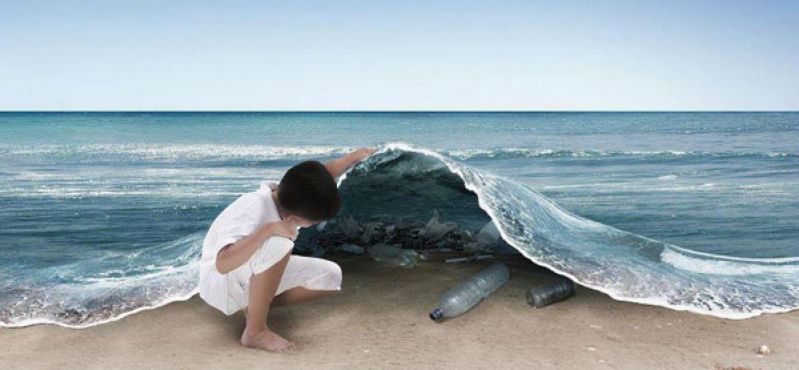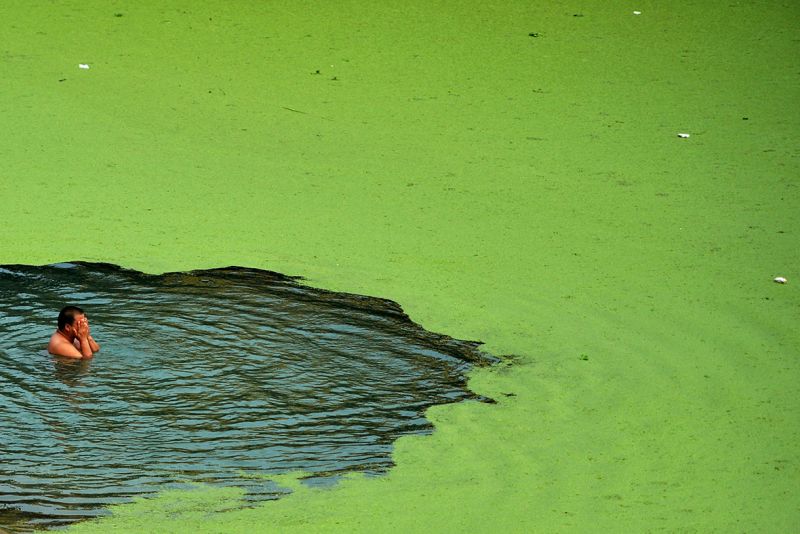Finding a New Way to Tackle Water Pollution
Published on by Water Network Research, Official research team of The Water Network in Government
This article explains the possible reasons why the conventional policy of tackling water pollution has failed and explores a new way to solve this severe global problem.
 Water pollution is a global problem that will only get worse over time. But it is only recently that countries around the world have tried to take a serious look at the damage caused.
Water pollution is a global problem that will only get worse over time. But it is only recently that countries around the world have tried to take a serious look at the damage caused.
70 percent of our total land mass is filled with water, but only 0.01 percent of this water mass is in the form of usable fresh water, meaning that even if there is an apparent abundance of water on our planet only a fraction of it can be used as a source to sustain life.
How bad is the water pollution problem?
The New York Times reports that around 80 percent of China’s underground water sources are unfit for drinking and bathing. This is due to industrial contamination and farming. According to the World Water Development Report developed by UNESCO three out of four jobs worldwide are water dependent.
Half of the global workforce is employed in eight water and natural resource-dependent industries: agriculture, forestry, fisheries, energy, resource-intensive manufacturing, recycling, building and transport.
Hence neglecting water pollution related issues runs the risk of imposing serious negative impacts on economies, livelihoods and populations with potentially catastrophic and extremely costly results.
Why the problem is widely ignored
Water pollution problems are addressed only when it has become too late and the pollutants have significantly damaged the environment. Often water pollution, during its initial stages, goes unnoticed because the contamination is not visible. Other pollutants like smog are visible creating urgency to solve the problem. Popular way of solving the problem
In 1968 Garrett Hardin highlighted that “individual users acting independently according to their own self-interest behave contrary to the common interest of all users by depleting that resource through their collective action.” This idea that individuals neglect the well-being of a society in the pursuit of personal gain leads people to advocate for more centralized control when to comes to addressing problems related to common pool resources like water.
A lot of debate surrounding water pollution rotates around one of two policy actions: government/state intervention with regulatory control or privatization through allocation of property rights.
 But there are fundamental flaws in both these approaches. The first approach advocates government intervention and assumes that an external agent will improve regulations regarding an issue, nuances of which are foreign to the state.
But there are fundamental flaws in both these approaches. The first approach advocates government intervention and assumes that an external agent will improve regulations regarding an issue, nuances of which are foreign to the state.
We also assume that the agent will be able to effectively monitor actions of participants who default. Beyond the policy bias issues, the cost involved in surveying and installing an effective enforcement mechanism makes cost effectiveness of this approach questionable.
The literature on privatization focuses on dividing the land between various claimants who will then implement restrictions to safeguard their property and by working in their private best interest they will provide a socially desirable outcome.
Although plausible at first, the problem is that water is a flowing resource, making effective property rights allocation difficult. When toxins are dumped in a part of the river, they do not stagnate only in that area, but they affect the entire waterbed.
This means people living downstream would always pay for the misuse upstream and marine life has a tendency to migrate with water currents making allocation of a certain part of water real estate to a trawler inefficient.
The “New Institutional Approach”
As the name suggests self-organized and self-governing institutions have no direct government involvement when it comes to their establishment. They are born from the need for regulation and mutual understanding in order to enhance the sustainability of resources under question.
The idea of self-governing institutions is that they enact their own set of rules that are formulated with a majority consensus of everyone using the resource. Hence it is in the best interest of an individual to follow the rules of the community and failing to do so might seriously hamper an individual’s ability to use the resource.
Such institutions also reduce the monitoring problem as people using the resource are from the same community making information of resource abuse by a single individual easy to notice and free riding virtually impossible.
This does not mean that such institutions can solve all CPR related issues; there have been empirical studies where such institutions have failed. But in such a scenario we should focus on creating the right incentive structure for such institutions to flourish.
Conclusion
Solving Water Pollution is a complex issue and over the years traditional policy has failed to give us any viable solutions. Self-governing and self-organized institutions stand to provide a reliable solution to the water pollution problem. However, scaling such a model to apply to large water bodies like oceans and rivers is still not explored making its viability questionable.
But this model provides us with a new and less conventional way to look at water pollution, which can be used to regulate smaller water bodies. This is not a lasting solution, but if we work along these lines we are bound to find a breakthrough to solve our pollution problems. The solution will need to go beyond our conventional understanding of policy
Read full article at: International Policy Digest
Media
Taxonomy
- Water Pollution
- Policy
- Drinking Water
- Groundwater Pollution
- water treatment
- Sustainability
- Pollution